Carol writes: Our next campground was in a remote location situated several miles outside of Huachuca City, Arizona.
We trusted that our “temporary home” for the next two weeks would serve as an excellent basecamp for exploration of this corner of southeastern Arizona, an area notable for many centuries of rich history.
THE SPANISH ERA
One of the best places to begin the story of exploration and settlement during the Spanish era was at the Coronado National Memorial, which was established to commemorate the first major European expedition into the Southwest.
In the mid-16th century, under orders from the King of Spain, an expeditionary force of over 1000 led by Francisco Vasquez de Coronado marched through the San Pedro River Valley into present-day Arizona.
The expedition was tasked with searching for the Seven Cities of Cibola and its fabled gold.
From the parking area at Montezuma Pass, the route of Coronado’s expedition could clearly be appreciated in the distance.
Within sight of the Mexican border at the summit of the Coronado Peak Trail, natural panoramic views of two nations were stunning.
The border wall stretched into the distance as far as the eye could see, as sharply defined as a line drawn on a map.
Explorers from Spain came to this frontier area with plans to convert the indigenous population to Christianity. In the process, Native American lands were seized and secured for the Spanish crown. Such was the mission of the Spanish soldiers at the Presidio Santa Cruz de Terrenate, a rare historical site situated along the San Pedro River Valley. A 1-1/2-mile hike through harsh desert landscape
led to the ruins of this Spanish fort. A few adobe walls and some stone foundations were all that remained of the original presidio structure that dated back to 1776.
The missionary story of the era of Spanish influence continued at Tumacacori National Historical Park. Here, the lives of Native Americans mingled with European Jesuit and Franciscan missionaries. Sometimes these very different cultures thrived in harmony, as depicted in this artist’s idealistic interpretation of mission life.
At other times, there was painful conflict. Construction of the iconic mission church began 200 years ago but was never finished.
The exterior represented an interesting interpretation of the Spanish mission style, while the interior of this historic mission church had clearly fallen into severe disrepair.
Fast-forward to present-day Arizona. Here, the reality of Spanish influence took a decided wrong turn… The harsh, rough border city of Nogales had recently been in the news due to controversy over a barbed wired addition to the town’s very tall border fence. Naturally, we were curious what that was all about…
Indeed, a tall, ugly, rusty border fence literally bisected a residential area between both cities named Nogales.
The recent addition of rows of barbed wire
created a monstrosity that was truly shocking with its unmistakable message of hate! As a result, we felt quite intimidated and were unsure just how much we wanted to look around on foot. Just up the street from the international border, we stopped at McDonald’s for a few minutes to strategize over a cup of coffee.
Two no-nonsense McDonald’s “security attendants” patrolling the parking lot waived a $5 parking fee when I informed them that we intended to patronize McDonald’s. Wise corporate move, McDonald’s… Inside was just like any other McDonald’s, except that almost everyone spoke Spanish. Not to worry however—our order number was announced in English along with Spanish…
We opted to forego any exploration of Nogales on foot outside of McDonald’s parking lot. No grand Wells Fargo bank building in this gritty border town…
OLD TOWNS OF THE WILD WEST
The state of Arizona is speckled with the remains of many Old West towns in varying states of decline, such as:
The state of Arizona is speckled with the remains of many Old West towns in varying states of decline, such as:
- the railroad town of Fairbank, which was a transportation hub at the crossroads of several railroad lines during the Tombstone silver boom. Picturesque Fairbank Mercantile, one of the town’s few original structures, was still standing.
- the old stamp mill town of Millville, which was more interesting for its 600-year-old Hohokum petroglyphs than anything.
A day-trip to the historic mining town of Bisbee for lunch at the Copper Queen with friends Nolan and Val was a nice day. To work off lunch, we did a small portion of hilly Bisbee’s “Great Stair Climb.”
Of course, the granddaddy of all Wild West Arizona towns has to be Tombstone, the silver mining capital where stories of Wyatt Earp, Bat Masterson, and Doc Holiday have become legendary.
Main street was tastefully preserved for pedestrians only,
with the exception of an occasional stagecoach.
Tourism suffered a hit a couple of years ago when during the last simulated outdoor Gunfight at the OK Corral a real gun was mistakenly used by one of the actors, resulting in another actor and a tourist being wounded by real bullets… Yes, that really happened! The infamous Gunfight at the OK Corral is now reenacted indoors at multiple saloon venues. Definitely not as colorful…
As on a previous visit, we felt that Boot Hill was a bit too tidy to be totally authentic, and not worth more than a camera shot through the fence…
The crafter in me discovered this nifty quilted panel done by some talented local quilters.
During our 1989-90 year on the road, we camped for a couple of nights at nearby Fort Huachuca, which was established in 1877 to defend American settlers from Apache Indian attacks.
The historic parade ground,
bordered with well-maintained historic buildings,
was a lovely back-in-time scene with the Huachuca Mountains looming in the distance.
At one time the home of African American soldiers nicknamed the Buffalo Soldiers, this somewhat remote but fully modernized active Army post is now a center of military intelligence training.
While strolling along rows of headstones that mark the final resting place of many who have served, the Fort Huachuca Cemetery evoked an emotional ambience.
There were also some interesting gravesites of key historic figures in Fort Huachuca Army history.
Chief among our reasons for pausing to look around this unpopulated corner of Arizona was the opportunity to visit Kartchner Caverns. We needed a bit of convincing to accept the claim that Kartchner Caverns is one of the top 10 caves in the entire country. It turned out that Al and I were only a few minutes into the Rotunda/Throne Room tour when we became firm believers! This cave was as spectacular as any we had visited, and we have taken a lot of cave tours…
The fact that this limestone cave complex remains in near-mint condition (hence, NO PHOTOGRAPHY on the tours) since man first discovered it in 1974, and continues to exist as a healthy living cave with delicate calcite formations that continue to grow, certainly validated the Kartchner boast.
The impressive Kubla Khan formation was the highlight of the tour.
OUR LADY OF THE SIERRAS
Sometimes places we never knew existed, or activities we never dreamed we would do, end up becoming pleasant surprises.
And so it was at the shrine of Our Lady of the Sierras, a holy place that was inspired by a Virgin Mary apparition site in Medjugorje in the former Yugoslavia. A 75-foot Celtic Cross, a 31-foot statue of Mary, and a tiny meditation chapel loomed over a breathtaking view of the valley below.
A winding uphill path lined by the Stations of the Cross was the only way to the top. A near-perfect venue for serious meditation…
MILLER PEAK
When friend Nolan proposed hiking 9466-ft Miller Peak near his home in Sierra Vista, Al was instantly on board.
Unfortunately, a prescribed burn along the trail they planned to take necessitated a longer 12-1/2-mile roundtrip on the snowy north-facing flank.
Brute strength and sheer determination got these two to the top, despite an exhausting struggle through some pretty deep snow.
ARIZONA WINE COUNTRY
And finally, we picked the perfect way to conclude our stay in this part of Arizona…
Who knew that we were smack dab in the middle of some pretty great Arizona wine country? The claim was that this local microclimate of rich soil, cool nights, warm days and high elevation were a winemaker’s dream. To test this theory, we visited three tasting rooms in the “middle of nowhere” along Elgin Road.
Talking with the Australian-educated owner of Kief-Joshua Vineyards was lively and informative. And yes, our tasting room experience demonstrated that Kief’s Arizona-grown grapes made some pretty tasty wine.
Flying Leap Vineyards and Distillery offered some delicious distilled spirits tasting.
And Callaghan Vineyards, while not having the fanciest tasting room, had the distinction of having their wines featured at White House functions on four different occasions. Great bragging rights!
Indeed, a little wine and distilled spirits tasting was the perfect way to wind up our stay in this very interesting corner of the desert in Arizona high-country.














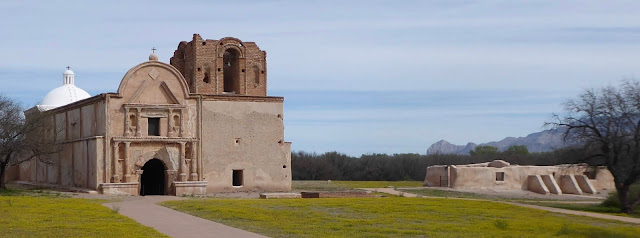










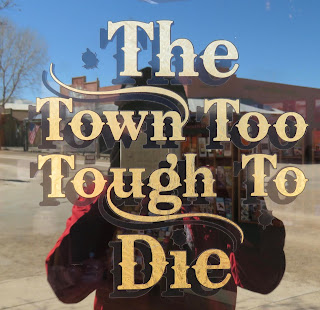


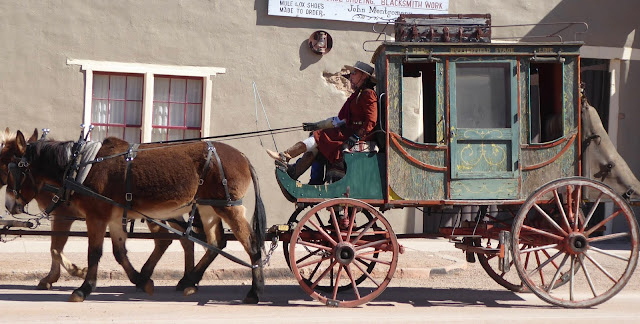


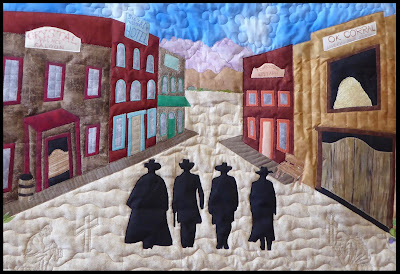




















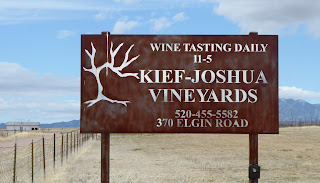




No comments:
Post a Comment